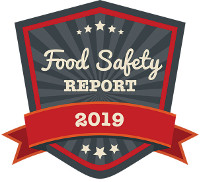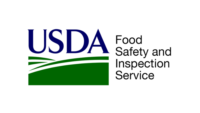Recently, the U.S. Department of Agriculture’s Food Safety and Inspection Service (FSIS) revised its Microbiology Laboratory Guidebook (MLG) for certain foodborne pathogens. Notably, the changes come at a time when the poultry industry has dealt with a prolonged Salmonella outbreak, and with so much industry conversation on the topic, the agency and its guidebook, now is a good time to sort out what it means.
As a public health agency responsible for ensuring meat, poultry and egg products are safe, wholesome and well-labelled, the USDA-FSIS has federal power to cease operations and order recalls. It inspects and regulates nearly 6,000 U.S. facilities and performs nearly 190,000 scientific analyses per year. It also partners with other agencies, including the FDA (which regulates other foods) and the CDC (which investigates foodborne illness and outbreaks, and monitors prevention and control effort effectiveness.)

Table of Contents:
The MLG is published as a guide to the methods used by the FSIS for routine testing of collected samples. As the FSIS website states, it “contains protocols for analytical tests required by FSIS regulatory activities on meat, poultry and eggs.” The document is organized into chapters describing methods to detect and enumerate organisms of concern, meat tissue species identification, and the detection of antimicrobial residues.
Overall importance, latest updates
MLG inclusion is meant for informational purposes, indicating FSIS laboratories use, not necessarily promote, that method. However, the agency expects any test a food processor uses is comparable to its method, appropriate for intended use and free of modifications compromising performance.
In FSIS-regulated facilities, samples are collected by inspectors and analyzed in laboratories. The testing methods have been largely unchanged for many years; however, in 2017, a process began to evaluate methods. The evaluation allowed USDA to compare currently available technology to ensure the best science available is applied to their work.
Following evaluation, the FSIS selected and awarded contracts to two rapid pathogen-detection solutions in summer 2018. A subsequent legal challenge to its contract submission collection process expanded the service providers and solutions to three, and the agency re-allocated and placed orders accordingly. The FSIS then updated the MLG for Salmonella, Listeria monocytogenes and Shiga toxin-producing E. coli in February 2019.
Successful recipe for considering rapid methods
Meat, poultry, egg and Siluriformes (fish) producers re-evaluating their test methods in light of the MLG update should test any method being considered with their unique food matrices. They should also confirm the training and technical support offered by any vendor addresses their needs.
As food and food safety tests evolve, so too will the surveillance and regulation frameworks surrounding them. Manufacturers keeping one eye on the future with the other on technical details can help protect their brands and their consumers. NP


